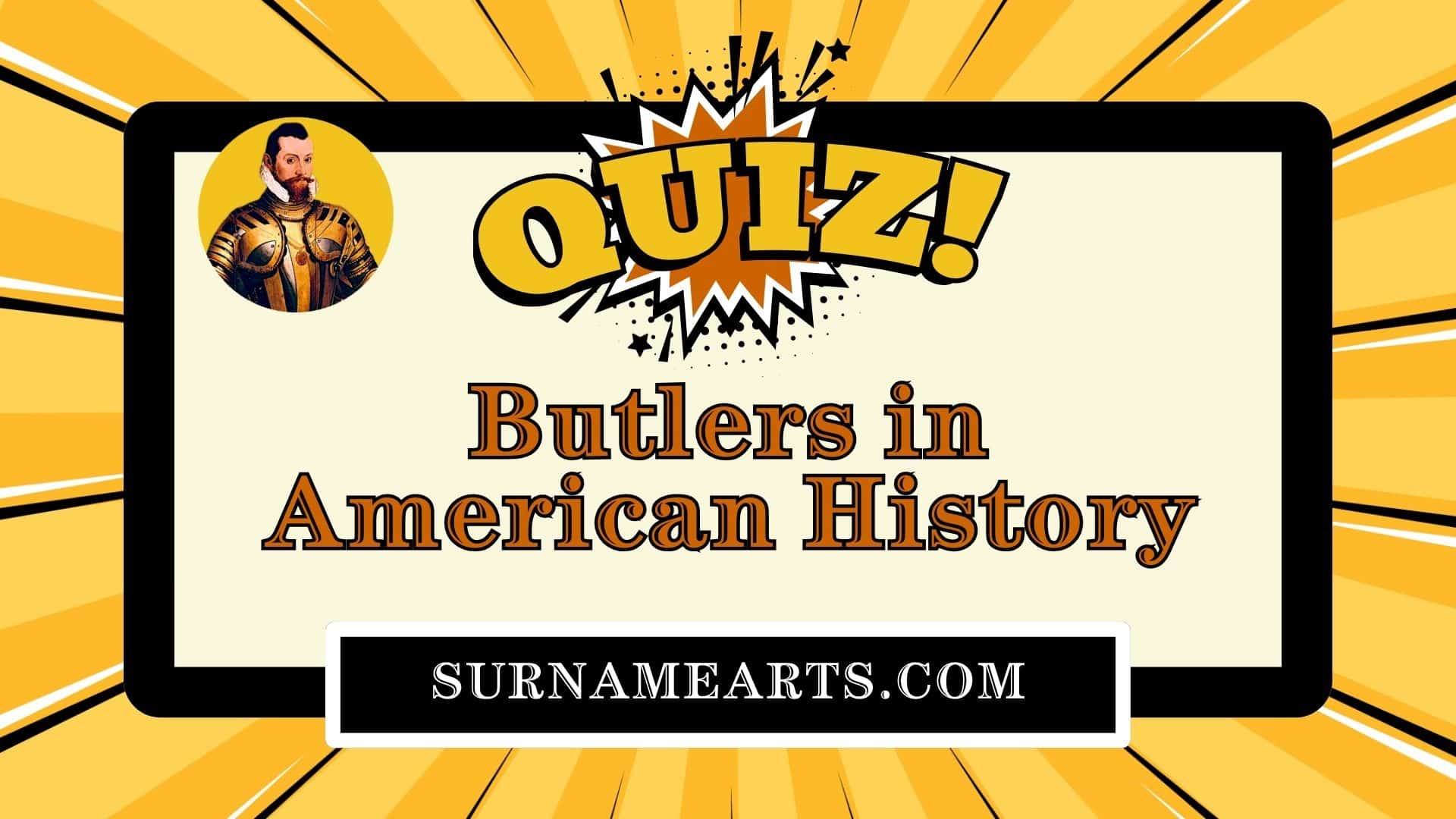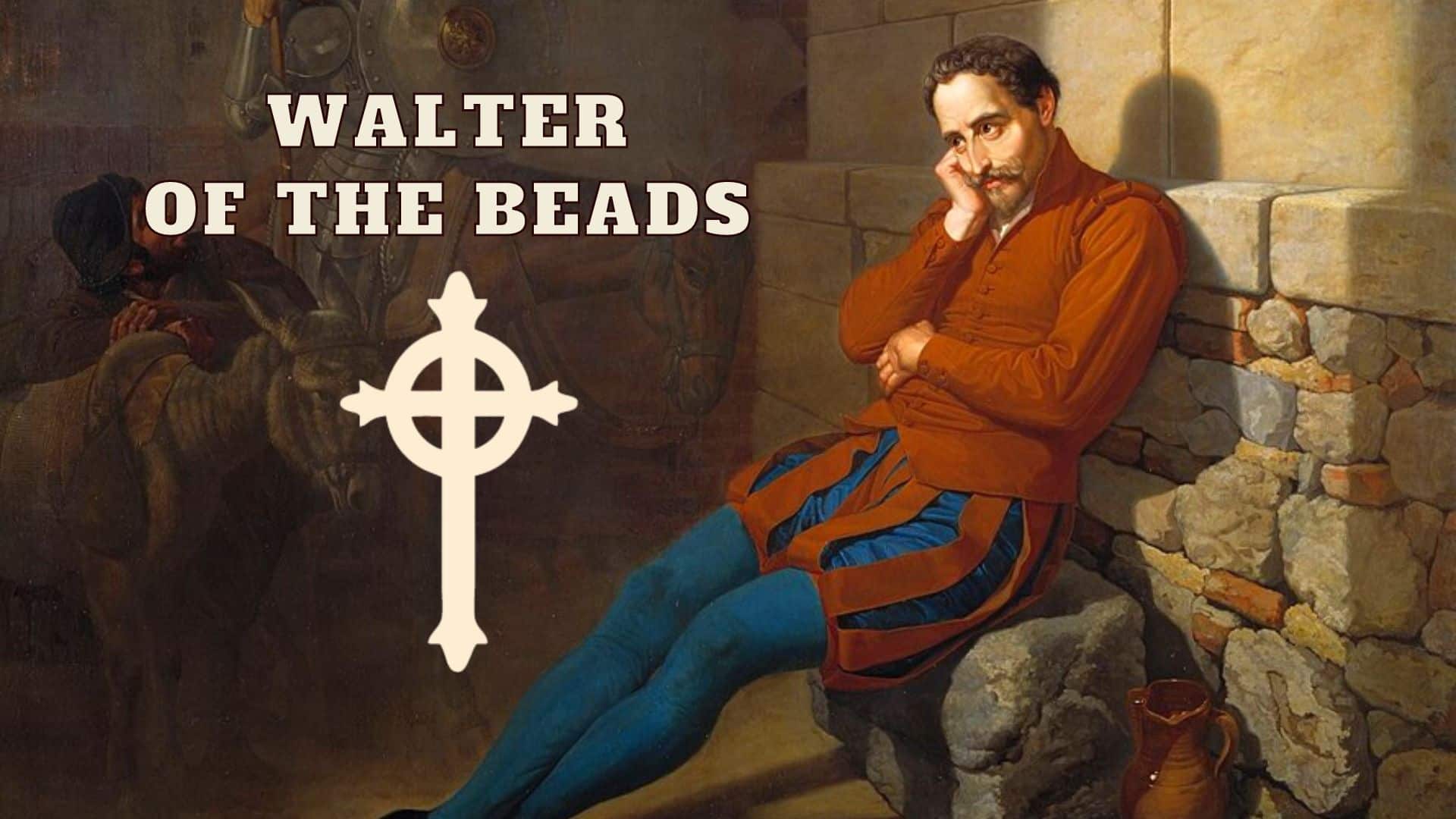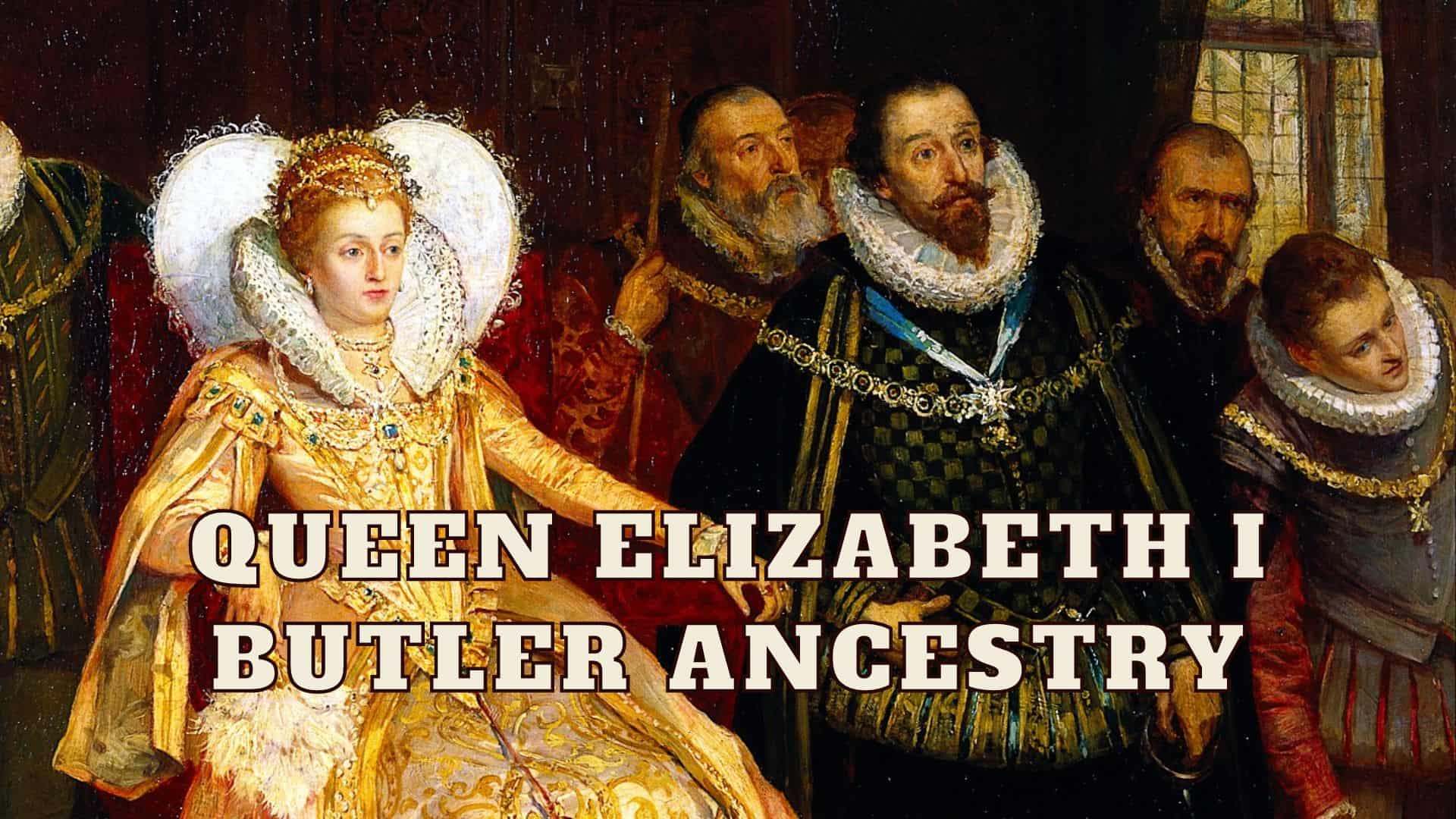
Part 2 of a documentary series that profiles the Butler family and the title Earl of Ormond in the Irish peerage.
John Butler, 6th Earl of Ormond (1422-1477)
John, like his older brother James, was a Lancastrian and also fought at the Battle of Towton. To avoid the same fate as his brother, he went into exile, eventually making his way back to Ireland and the Butler territory of Tipperary and Kilkenny, where he still had support.
In 1462, he gathered a force of Lancastrians only to run into the Pro-Yorkist and Butler Family Nemesis, Thomas Fitzgerald, 8th Earl of Desmond, at the Battle of Piltown. This time, there would be no Butler Aboo. John lost over 400 men to the Yorkist forces but escaped with his life. This battle effectively ended any hope of Lancastrian control in Ireland and bolstered the Fitzgerald dynasty after previous defeats at the hands of the Butlers.
So, John had seen his brother beheaded; his hereditary title, family lands, and social status lost by attainment; and suffered a resounding military defeat at Pilltown led by a Fitzgerald, his family’s archrival. To say that John and the Butler family’s future prospects were diminished would be a bit of an understatement.
For the next six years, John lived in exile in Portugal and France. Over time, looking to reclaim his family’s fortunes, he realized that he would need to reconcile with King Edward—the same King that had overseen the beheading of his brother and the forfeiture of his title and family lands.

John obviously did a phenomenal job of winning him over because King Edward was quoted as saying that John was the goodliest knight he ever beheld and the finest gentleman in Christendom. He also said that if good breeding, nurture, and liberal qualities were lost in the world, they might all be found in the Earl of Ormond.
John, as his brother James’ heir, became the 6th Earl of Ormond, and his Irish lands and titles were restored. Beyond simple restoration, King Edward made John an ambassador to the most important courts in Europe, where he was able to utilize his complete mastery of multiple languages and was widely considered one of the first gentlemen of that time. John’s ingenuity had revived the Butler Dynasty.
In 1477, John died on a pilgrimage to the Holy Land. He died unmarried but had three illegitimate sons by the daughter of the Irish Chief Turlough O’Brien. One of those sons, Sir James Ormond, also known as Black James, rose to prominence in the 1490s as treasurer and joint governor of Ireland. He would also become a central figure in the future of the Butler family.
Thomas Butler, 7th Earl of Ormond (1426–1515)
Thomas, the 7th Earl of Ormonde, was the younger brother of James and John. Like his brothers, he was born in Ireland but spent most of his life in England. He owned large tracts of Irish land in Kilkenny and Tipperary, as well as 72 manors in England, making him one of the Kingdom’s wealthiest men. His wealth resulted in a nickname — The Wool Earl.
As an Irish peer, Thomas should have only sat in the Irish Parliament but, because of his friendship with King Henry VII, he also became a member of the English Parliament. In the late 1400s, he served as an ambassador to Brittany and Burgundy in France.
Thomas was appointed Lord Chamberlain to Catherine of Aragon in the year 1512. Being Lord Chamberlain meant that he was the most senior officer in the household and the primary channel for royal communication. And, if the name Catherine of Aragon sounds familiar, well, she was Queen of England and King Henry VIII’s first wife.
So, while Thomas had everything under control in England, things in Ireland were falling apart in his absence. When he tried to impose his authority in Ireland, he was opposed by his cousin, Piers Butler. Piers, who went by his nickname, Red Piers, was the son of Sir James Butler from the Polestown branch of the family and was supported by his father-in-law, Gerald Fitzgerald, the 8th Earl of Kildare.
In an effort to better manage his interests in Ireland, Thomas appointed a deputy to act on his behalf. This deputy was none other than his nephew, Sir James Ormonde – also known as “Black James” – who was his brother John’s illegitimate son. This threatened and angered Red Piers because he thought that Black James was taking a place that was rightfully his.

The rivalry between Red Piers and Black James came to a head in 1497 when Black James used his position as Thomas’ deputy to ensure that Red Piers and his very pregnant wife, Margaret Fitzgerald, were essentially penniless. Red Piers decided to take matters into his own hands and ambushed and murdered Black James.
By claiming self-defense and arguing that Black James was a traitor who abused the powers he was given on behalf of the Earl of Ormond, Red Piers was pardoned for Black James’ murder.
Thomas, unable to leave England and unable to enforce his authority in Ireland, then made Red Piers his deputy in Ireland. Red Piers and his wife wasted little time moving into Kilkenny Castle after the appointment. For the next 17 years, he worked to secure a hold on the earldom of Ormond.
Thomas married twice but didn’t have any male heirs when he died in 1515. His estates in England were passed down to his two daughters. One of the daughters, Lady Margaret Butler, became the grandmother of Queen Anne Boleyn, the second wife of King Henry VIII and the great-grandmother of Queen Elizabeth I.
Piers Butler, 8th Earl of Ormond (1467–1539)
When Thomas died without a male heir, Red Piers, firmly entrenched in Kilkenny Castle and all Ormond business affairs, became the 8th Earl of Ormond. He gained favor with the king by fighting against rebel Irish lords on the side of the English. Eventually, he was made Chief Governor of Ireland and then Lord Treasurer.
In 1522, Red Piers’ son James was pledged in marriage to his cousin. The cousin’s name? Anne Boleyn. But, as fate would have it, the engagement was broken off and Anne became the maid of honor to Catherine of Aragon, King Henry VIII’s wife.

Over time, Henry VIII fell in love with Anne. In an effort to win her affection, he decided to give the earldom of Ormond, which Red Piers held, to Ann’s father, Thomas Boleyn, whose mother was Lady Margaret Butler.
So, in 1528, Red Piers surrendered the title he had literally killed for to the father of the woman who was supposed to be his daughter-in-law. That’s a storyline to rival any soap opera!
In the 1530s, everything would come full circle. The Fitzgeralds started one of several rebellions against Henry VIII. Being loyal to the king, one of Red Piers’ sons, Thomas, tried to squash the rebellion. He was killed in the process.
Given the loss of his son in defense of the crown and the fact that Anne and Thomas Boleyn had by then fallen out of royal favor, King Henry gave the earldom of Ormond back to Red Piers in what is known as the Third Creation of the title. So, Red Piers gained, lost, and regained the title of 8th Earl of Ormond.
Despite the not-so-small issue of being a murderer, Red Piers and his wife, Margaret Fitzgerald, went on to do some good in their community. Most notably, they founded Kilkenny College in 1538 to promote education in the city. Today, it is one of Ireland’s oldest surviving schools. They also made significant strides as real estate developers. They’re credited with additions to Granagh Castle in Kilkenny; they rebuilt a Butler family castle in Gowran; and they also made improvements to Ormond Castle.
At the time of his death in 1539, Piers had three sons and six daughters. He was an important member of the Butler family because he was able to re-establish the authority of the earldom of Ormond that had been damaged by the long absences of James the 5th, John the 6th, and Thomas the 7th from Ireland. He also emerged as one of the most important magnates of his day, which provided future Butler generations with a strong financial and political base. The Mountgarret branch of the Butlers descends from Piers’ second son, Richard Butler.
James Butler, 9th Earl of Ormond (1496-1546)

James, the 9th Earl of Ormond and 2nd Earl of Ossory, had an illustrious career. Unfortunately, he had a horrible nickname and was the subject of a centuries-old mystery.
A few of the positions James held during his life included: Esquire of the Body to King Henry 8 (this meant that he was the king’s personal attendant and was present at court proceedings); Lord High Treasurer of Ireland; Privy Counsellor of Ireland; Admiral of Ireland; Constable of Kilkea and Carlow Castles; and a General in the Irish Forces. In 1535, the title Viscount of Thurles in the Irish peerage was created for him.
Despite all his titles and positions, he was often called “The Lame.” The nickname had nothing to do with his mental acuity. It was physical. In 1513, during King Henry VIII’s invasion of northern France, he received a leg wound that gave him a limp for the rest of his life.
James got into a fight with the Kildare branch of the Fitzgerald family as soon as he got back to Ireland in 1528. To help ease tensions between the families, he married Joan Fitzgerald, the daughter of the 11th Earl of the Desmond Fitzgeralds. So, his mother was a Fitzgerald, and his wife was a Fitzgerald.
Unfortunately, the Kildare Fitzgeralds and their allies decided to start a rebellion against King Henry VIII, which resulted in the death of James’ brother, Thomas. The Butlers sprang into action and played an important role in defeating the Kildare rebellion. They had once again triumphed against the Fitzgeralds, which made them stronger and more influential in Ireland.

In 1546, James was invited to dinner at Ely Palace in Holborn by John Dudley, 1st Duke of Northumberland. As was the custom for a man of his stature at that time, he brought many members of his household with him.
At the dinner, James, his steward, and 16 of his household members were poisoned. He died a few days later. The person or people behind the poisoning were never discovered and no investigation was ever conducted, which was surprising given his social standing. Historians have surmised that the Lord Deputy of Ireland, Sir Anthony St Leger, James’ main political rival, was most likely involved. However, it is still unknown who killed James.
So, James’ father, Red Piers, murdered Black James, and now his son was murdered, proving once again that what goes around comes around.
When James died in 1546, he left behind seven sons, which was kind of like winning the medieval lottery. These sons added many new branches to the Butler family tree, including the Butlers of Cloughgrennan, Kilcash, and Duiske.
Recommended Readings
- Beresford, D. (2009, October 1). Butler, Piers (‘Piers Ruadh’) | Dictionary of Irish Biography. Butler, Piers (‘Piers Ruadh’) | Dictionary of Irish Biography; www.dib.ie.
- Ireland’s Wars: Roses At Piltown. (2012, May 29). Never Felt Better; neverfeltbetter.wordpress.com.
- Lawless, E. (2013, June 14). Sir James the Lame. ErinLawless.Co.Uk; erinlawless.wordpress.com.
- Anne Boleyn | Biography, Children, Portrait, Death, & Facts. (n.d.). Encyclopedia Britannica; www.britannica.com.
- Feature Image Credit (Coronet of a Earl): W3C-unspecified vector image was created with Inkscape. – Own work, CC BY-SA 3.0.












